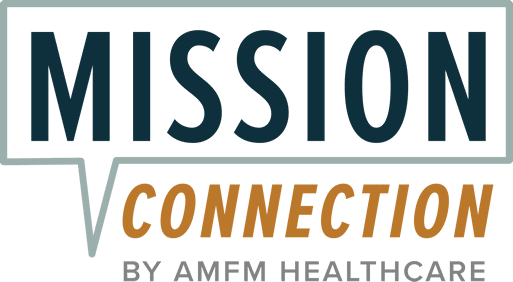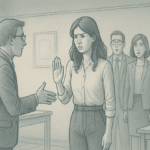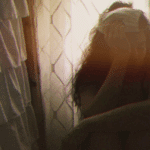OCD Symptoms: Early Signs of OCD and Treatment Options

OCD affects over 2 million adults in the US, often sneaking in subtly before taking control of daily life.1 This is because the early signs of OCD symptoms can be easy to dismiss – persistent worries, repetitive behaviors, or needing things to feel “right.”
Despite how it can be easy to miss these signs, recognizing them might be crucial for long-term well-being. OCD isn’t “quirky” – it’s a mental health condition that deserves attention and support.
Consulting a mental health professional is often the most effective way to find relief from OCD symptoms. However, this article can also help, as it aims to guide you towards better awareness of the signs of OCD by covering:
What OCD is- Obsessive thoughts explained
- Compulsive actions clarified
- Recognizing OCD symptoms
- Myths and misconceptions about OCD
- Effective treatments for OCD
- Where to find professional support

What Is Obsessive-Compulsive Disorder?
To help define the condition, the American Psychological Association (APA) defines OCD as a condition “characterized by recurrent intrusive thoughts (obsessions) that prompt the performance of neutralizing rituals (compulsions).”3
To help further clarify OCD, we cover its potential causes, as well as examples of the obsessions and compulsions associated with the disorder in the upcoming sections.
What Causes OCD?
OCD impacts more than one in every hundred adults in the U.S.1 Yet, despite this high percentage, the precise cause of OCD still isn’t known. However, several risk factors may contribute to a person developing it. For example, research tells us that risk factors may include:4,5
- Imbalance of neurotransmitters
- Family history of OCD
- Stressful life events, for example, abuse
- Certain personality traits, such as having a strong sense of responsibility or feelings of anxiety
Therefore, it may be the case that the causes of OCD differ from person to person. It could also be a complex interplay of a number of these factors. The following sections go into more detail on the obsessions and compulsions involved in this disorder.
What Are Obsessive Thoughts?
These obsessions come into the mind without a person wanting them to, and can be extremely difficult to detach from. Even when someone actively tries to stop these thoughts, they can persist, often leading them to be excessively disturbed by them.
Oftentimes, the obsessional theme in OCD is related to a subject the person holds dear in their life, which is what can make these obsessions so distressing.6 Additionally, obsessions can become increasingly time-consuming and interfere with daily functioning.
To help you understand what obsessions can feel or sound like, we cover a few examples next.
Obsession Examples:
Obsessions can be loosely grouped into certain categories:7,8
Contamination: A fear of coming into contact with contaminated substances, such as bodily fluids, germs, or dirt- Responsibility: Fears of being responsible for something terrible happening, either to yourself or others due to your perceived lack of diligence
- Perfectionism: An excessive concern about things being perfect, for example, counting numbers, needing order, or a fear of making mistakes
- Identity: An excessive concern with one’s identity, for instance, sexual orientation or gender
- Religious/Moral: A fear relating to religion or morality, such as fear of offending God, concerns about blasphemy, or excessive worries about “right and wrong”
- Violence: A fear of acting on a violent impulse, for example, harming yourself, others, or having unwanted violent mental images
- Sexual: Having unwanted thoughts or mental images relating to sex, for instance, acting on sexual impulses, sexually harming others, or performing aggressive sexual acts
- Other: Obsessions can also be linked to relationships, death, false memories, or emotional contamination
Please note this is not an exhaustive list of all obsessions associated with OCD. It is a general overview that shows how obsessive thoughts can come in all shapes and sizes.
What Are Compulsive Actions?
In OCD, compulsive actions are behaviours that a person carries out in an attempt to neutralize the fears that obsessions can bring. These behaviours are often known as “rituals.”
Sometimes, these rituals seem to make sense in relation to the obsession, for example, a person who has an obsession involving contamination may engage in excessive hand washing compulsions. Yet, sometimes the compulsion may appear completely unrelated to the obsession, such as counting numbers in your head to ease the fear that a loved one is in danger.
Regardless of how they present, carrying out these rituals often brings only a limited amount of relief from feelings of anxiety. Often, someone with OCD usually realizes this is a temporary relief, but without a better alternative, they feel compelled to continue with the rituals.
In other words, they do not want to carry out the compulsions: they get no joy from them, they can be extremely time-consuming, and they can significantly impact their life.
The following are examples of compulsions to help you determine whether these are something you or a loved one are attempting to cope with.
Compulsion Examples:
Just like obsessions, compulsions can manifest in a variety of ways. For instance, they may look like:7
Cleaning: For example, washing hands, cleaning objects, or doing things to remove contaminants- Checking: Such as making sure that you have not made a mistake, or harmed others or yourself
- Mental investigations or rituals: Including reviewing events that have happened to ensure no harm has come to anyone, praying to prevent harm, or counting numbers
- Repetitions: For instance, flicking light switches on and off, bodily movements such as tapping or blinking, or doing activities in set numbers
- Other: Compulsions can manifest in other ways, such as putting things in order until they “feel right,” constantly asking for reassurance, or avoiding situations that may trigger obsessions.
This is a brief outline of the ways that compulsions may present themselves. As you may be able to see, some of these are more obvious as early signs of OCD symptoms than others, such as cleaning and washing compulsions. On the other hand, some are less visible, such as mental rituals.
If some of these thoughts or behaviors seem familiar, they could be OCD warning signs. The next section will help you recognize the signs of OCD in teens and adults.
Recognizing OCD
Symptoms can start slowly, often in the teenage or early-adult years, and the severity of symptoms can vary throughout life. It’s important to note that the particulars of the obsessions or compulsions can change over time. For instance, a person with obsessions related to contamination may find they morph over time into thoughts about violence or harm.
Some of the most common symptoms of obsessive-compulsive disorder are listed below. You could think of this as a mental health symptom checklist for OCD:9,10
Experiencing obsessions or compulsions- Feeling unable to control obsessions or compulsions
- Spending more than one hour a day on obsessions or compulsions
- Not obtaining any pleasure from compulsions
- Feeling only a temporary relief from anxiety when performing rituals
- Experiencing problems in daily life due to obsessions or rituals
- Avoiding situations that may trigger OCD
- Recognizing that compulsions or obsessions do not make sense
If you recognize some of these features, you may want to consider seeking an OCD evaluation. This can be done by a licensed clinician who can assess your symptoms and confirm whether or not there is enough evidence for an OCD diagnosis.
Fortunately, OCD can be effectively treated and managed with the right support. Recognizing the signs and seeking help from a therapist are essential for gaining control and relief from symptoms. However, some people may feel reluctant to seek help due to the myths and misconceptions about OCD. The next section addresses these head-on.
Dispelling Myths and Misconceptions About OCD
Myths, misconceptions, and stereotypes around OCD can make some people feel resistant to accessing treatment. For this reason, this section is dedicated to dispelling some of the most common myths about OCD, so that people can feel more confident about getting the support they deserve.
The following are some of the most common OCD myths and challenges to these misconceptions:
1. MYTH: OCD is just having a quirky personality
TRUTH: OCD is a mental health condition, and is classified as such in the DSM-52
2. MYTH: We’re all “a little OCD”
TRUTH: OCD can vary in terms of how severe it is, but it’s more than a personal quality
OCD is a condition that has diagnostic criteria, just like other health conditions, such as diabetes or asthma. People wouldn’t say they have “a little bit of asthma” or “a little bit of diabetes.” In the same way, you cannot be “a little bit OCD.”
3. MYTH: OCD is just about being clean and tidy
TRUTH: OCD goes way beyond being obsessively clean or tidy
OCD is much more far-reaching and intrusive than wanting things to be neat or clean. It involves intrusive thoughts with rituals to neutralize fears and reduce the anxiety and distress they provoke.
4. MYTH: Having OCD means you’re very organized
TRUTH: The presence of OCD doesn’t necessarily mean someone is organized
OCD doesn’t mean having things in order or being great at organizing things. It covers a range of obsessions and compulsions that cause distress to the person experiencing them.
5. MYTH: OCD is just a phase and will go away on its own
TRUTH: OCD is not a phase – it’s a real, diagnosable, mental health condition that requires treatment to improve
If left untreated, OCD condition can worsen over time. When early signs of OCD symptoms are noticed and treated, its effects can be reduced, such as OCD behavioral patterns, lessening the impact of OCD on someone’s life.
Treatment for OCD Symptoms
OCD can seriously impact work, relationships, and daily functioning. Fortunately, OCD mental health help is available. The next few sections explain the most common and effective ways of treating and coping with OCD symptoms. A mental health professional can talk to you about the best fit for your needs.
Therapy for OCD
Cognitive behavioral therapy (CBT) is an evidence-based therapy often used as a first-line treatment for OCD. A key component of CBT that can be very effective is exposure and response prevention (ERP).12-14
ERP involves exposing patients to their fears, triggers, or obsessions in a gradual manner. At the same time, they resist engaging in their rituals or compulsions that they usually employ to bring anxiety relief. In this way, people with OCD can face their fears in a manageable way, in a safe environment, and with the support of a trained professional.
OCD Medications
If CBT and ERP are not effective at reducing symptoms, medication may be considered. Some of the most common medications prescribed for OCD are selective serotonin reuptake inhibitors (SSRIs), which are also sometimes used to treat depression and anxiety.
Additionally, a tricyclic antidepressant (TCA) called “clomipramine” has also been found to be effective.12,15 However, as with all medications, there is the risk of side effects as well as the intended effect of symptom management. If you are considering medication, talking to your doctor is the best way to find the most suitable option for you.
OCD is a treatable mental health condition, so it’s possible to find relief from the obsessions and compulsions that feel overwhelming. The key steps toward relief is spotting the early signs of OCD symptoms and seeking help and professional support at the earliest opportunity.
Overcoming OCD With Mission Connection
When ruminations feel relentless and compulsions are all-consuming, remember that it’s never too late to ask for help. Treatment for OCD is not only possible, it’s within your reach.
At Mission Connection, we are experts in helping people overcome mental health challenges, including obsessive-compulsive disorder. With the support of our team and science-backed therapies, you can look forward to a future that’s brighter, lighter, and calmer.
Our therapeutic model is based on your needs and symptoms, so you can feel assured that treatment will be tailored to fit your circumstances. Whether this is an effective talk therapy or medication management, the right support is at hand.
Are you ready to find relief from the obsessions and rituals that weigh you down? Reach out to us today to learn more about how we can help you on your healing journey.

References
- Anxiety and Depression Association of America, ADAA. (2025, August 21). Anxiety Disorders – Facts & Statistics. https://adaa.org/understanding-anxiety/facts-statistics
- American Psychiatric Association. (2022). Diagnostic and statistical manual of mental disorders (5th ed., text rev.). https://doi.org/10.1176/appi.books.9780890425787
- American Psychological Association (APA). (2023, November 15). Obsessive-Compulsive Disorder. APA Dictionary of Psychology. https://dictionary.apa.org/obsessive-compulsive-disorder
- International OCD Foundation. (2025, April 22). What causes OCD? https://iocdf.org/about-ocd/what-causes-ocd/
- National Health Service (NHS). (2025, July 28). Overview – Obsessive compulsive disorder (OCD). NHS Website. https://www.nhs.uk/mental-health/conditions/obsessive-compulsive-disorder-ocd/overview/
- Anxiety and Depression Association of America (ADAA). (2025, August 20). Obsessive-Compulsive Disorder (OCD) https://adaa.org/understanding-anxiety/co-occurring-disorders/obsessive-compulsive-disorder
- International OCD Foundation. (2025, February 5). All there is to know about OCD. https://iocdf.org/about-ocd/
- Clark, D. A., & Radomsky, A. S. (2014). Introduction: A global perspective on unwanted intrusive thoughts. Journal of Obsessive-Compulsive and Related Disorders, 3(3), 265–268. https://doi.org/10.1016/j.jocrd.2014.02.001
- National Institute of Mental Health (NIMH). (2023). Obsessive-Compulsive disorder: when unwanted thoughts or repetitive behaviors take over. https://www.nimh.nih.gov/health/publications/obsessive-compulsive-disorder-when-unwanted-thoughts-or-repetitive-behaviors-take-over
- Mayo Clinic. (2023, December 21). Obsessive-compulsive disorder (OCD) – Symptoms and causes. https://www.mayoclinic.org/diseases-conditions/obsessive-compulsive-disorder/symptoms-causes/syc-20354432
- OCD-UK. (n.d.). World Health Organisation and OCD. Retrived September 2, 2025. https://www.ocduk.org/ocd/world-health-organisation/
- Brock, H., Rizvi, A., & Hany, M. (2024, February 24). Obsessive-Compulsive Disorder. StatPearls – NCBI Bookshelf. https://www.ncbi.nlm.nih.gov/books/NBK553162/
- Nezgovorova, V., Reid, J., Fineberg, N., & Hollander, E. (2022). Optimizing first line treatments for adults with OCD. Comprehensive Psychiatry, 115, 152305. https://doi.org/10.1016/j.comppsych.2022.152305
- Law, C., & Boisseau, C. L. (2019). Exposure and Response Prevention in the Treatment of Obsessive-Compulsive Disorder: Current Perspectives. Psychology Research and Behavior Management, Volume 12, 1167–1174. https://doi.org/10.2147/prbm.s211117
- American Psychiatric Association. (2024, September). What Is Obsessive-Compulsive Disorder? https://www.psychiatry.org/patients-families/obsessive-compulsive-disorder/what-is-obsessive-compulsive-disorder






